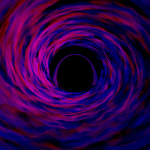Dominique Luchart's Blog, page 611
May 28, 2021
Apple delays Podcasts subscriptions to June, Jay Peters

 Illustration by Alex Castro / The Verge
Illustration by Alex Castro / The VergeApple is delaying the launch of its upcoming Podcasts subscriptions until June, the company announced in an email sent to creators Friday (via 9to5Mac). The service was previously set to launch this month.
Apple’s Podcasts subscriptions will allow people to subscribe to participating podcasts to get extra perks like ad-free listening or early access to episodes. In April, Apple said the subscriptions would launch in 170 countries, and that initial partners include Pushkin Industries and NPR.
The shifted launch comes as some creators using Apple Podcasts have recently run into some issues, such as being unable to log in to Apple’s Podcast Connect portal or seeing a delay in the availability of new episodes. In its email sent Friday, Apple…
The post Apple delays Podcasts subscriptions to June, Jay Peters appeared first on NEWDAWN Blog.
‘In Search Of Tomorrow’: Director David Weiner on his nostalgic project saluting ’80s sci-fi (exclusive), ,

It’s a futile mission trying to argue against the point that the decade of the ’80s was the greatest era of sci-fi movie making in Hollywood history.
Dotted with a constellation of iconic flicks like “Star Wars: The Empire Strikes Back,” “The Thing,” “Blade Runner,” “E.T. The Extraterrestrial,” “Tron,” “Star Trek: The Wrath of Khan,” “Terminator,” “Ghostbusters,” “Robocop,” “Predator,” “Dune,” “Star Wars: Return of the Jedi,” “The Fly,” “Aliens,” “Back to the Future,” and “The Abyss,” it was an immeasurably fertile time for the imaginative genre.
The best sci-fi movies and TV shows to watch on Amazon Prime
[image error]
Director David Weiner’s new documentary “In Search of Tomorrow” examines the high art of 1980s science fiction. (Image credit: CreatorVC/David Weiner)[image error]
(Image credit: CreatorVC/David Weiner)Now hot off his ’80s horror documentary, “In Search Of Darkness,” writer/director David A. Weiner seeks to salute that glorious period of science fiction fare with a new four-hour-plus documentary titled “In Search Of Tomorrow.” This successful Kickstarter project has already blown past its initial funding goal and just delivered its first trailer to feast upon! Check it out above.
Scheduled for release next winter, “In Search Of Tomorrow,” is loaded with exclusive interviews with the actors, directors, screenwriters, cinematographers, visual effects wizards, and composers that brought these beloved films to life. Wiener’s nostalgic documentary is a year-by-year love letter to sci-fi filmmaking of the Awesome Eighties that celebrates and explores these seminal movies and the influences they’ve had on pop culture.
Speaking to Space.com, Weiner considers this 10-year stretch to be a pivotal evolutionary step in the expansion of big-screen sci-fi classics.
“So many talented filmmakers, from George Lucas and Steven Spielberg to Ridley Scott, James Cameron, George Miller and Robert Zemeckis challenged the genre at the height of their game with great stories and the best, most ground-breaking special effects at their disposal during the ’80s,” Weiner explains. “Imagination combined with technical capability to deliver one of the most fertile and influential decades of filmmaking ever. Today’s contemporary storytellers are still looking back to that decade for guidance and inspiration.”
[image error]
(Image credit: CreatorVC/David Weiner)Wiener and his team are aiming to deliver “In Search Of Tomorrow” December of 2021 and fans can visit 80sscifidoc.com to pre-order the film.
“Considering the complications, restrictions and delays we’ve experienced over the last year due to the pandemic, the fact that we have been able to assemble a cast of more than 75 icons of the industry — actors, artists, filmmakers, production crew and other experts — and resume extended interviews in a COVID-safe way is pretty amazing,” he adds. “We are actively filming new interviews every week!”
Follow us on Twitter @Spacedotcom and on Facebook.
Join our Space Forums to keep talking space on the latest missions, night sky and more! And if you have a news tip, correction or comment, let us know at: community@space.com.
The post ‘In Search Of Tomorrow’: Director David Weiner on his nostalgic project saluting ’80s sci-fi (exclusive), , appeared first on NEWDAWN Blog.
10 mind-boggling things you should know about quantum physics, ,
 1. The quantum world is lumpy
1. The quantum world is lumpy[image error]
(Image credit: getty)The quantum world has a lot in common with shoes. You can’t just go to a shop and pick out sneakers that are an exact match for your feet. Instead, you’re forced to choose between pairs that come in predetermined sizes.
The subatomic world is similar. Albert Einstein won a Nobel Prize for proving that energy is quantized. Just as you can only buy shoes in multiples of half a size, so energy only comes in multiples of the same “quanta” — hence the name quantum physics.
The quanta here is the Planck constant, named after Max Planck, the godfather of quantum physics. He was trying to solve a problem with our understanding of hot objects like the sun. Our best theories couldn’t match the observations of the energy they kick out. By proposing that energy is quantized, he was able to bring theory neatly into line with experiment.
2. Something can be both wave and particle[image error]
A solar sail: in space, light exerts pressure like the wind on Earth. (Image credit: getty)J. J. Thomson won the Nobel Prize in 1906 for his discovery that electrons are particles. Yet his son George won the Nobel Prize in 1937 for showing that electrons are waves. Who was right? The answer is both of them. This so-called wave-particle duality is a cornerstone of quantum physics. It applies to light as well as electrons. Sometimes it pays to think about light as an electromagnetic wave, but at other times it’s more useful to picture it in the form of particles called photons.
A telescope can focus light waves from distant stars, and also acts as a giant light bucket for collecting photons. It also means that light can exert pressure as photons slam into an object. This is something we already use to propel spacecraft with solar sails, and it may be possible to exploit it in order to maneuver a dangerous asteroid off a collision course with Earth, according to Rusty Schweickart, chairman of the B612 Foundation.
3. Objects can be in two places at once[image error]
Erwin Schrodinger used the idea of a cat in a box to simplify superposition. (Image credit: Mopic / Alamy Stock Photo)Wave-particle duality is an example of superposition. That is, a quantum object existing in multiple states at once. An electron, for example, is both ‘here’ and ‘there’ simultaneously. It’s only once we do an experiment to find out where it is that it settles down into one or the other.
This makes quantum physics all about probabilities. We can only say which state an object is most likely to be in once we look. These odds are encapsulated into a mathematical entity called the wave function. Making an observation is said to ‘collapse’ the wave function, destroying the superposition and forcing the object into just one of its many possible states.
This idea is behind the famous Schrodinger’s cat thought experiment. A cat in a sealed box has its fate linked to a quantum device. As the device exists in both states until a measurement is made, the cat is simultaneously alive and dead until we look.
[image error]
We could just be one bubble of many, each containing a different version of the universe. (Image credit: getty)The idea that observation collapses the wave function and forces a quantum ‘choice’ is known as the Copenhagen interpretation of quantum physics. However, it’s not the only option on the table. Advocates of the ‘many worlds’ interpretation argue that there is no choice involved at all. Instead, at the moment the measurement is made, reality fractures into two copies of itself: one in which we experience outcome A, and another where we see outcome B unfold. It gets around the thorny issue of needing an observer to make stuff happen — does a dog count as an observer, or a robot?
Instead, as far as a quantum particle is concerned, there’s just one very weird reality consisting of many tangled-up layers. As we zoom out towards the larger scales that we experience day to day, those layers untangle into the worlds of the many worlds theory. Physicists call this process decoherence.
5. It helps us characterize stars[image error]
The spectra of stars can tell us what elements they contain, giving clues to their age and other characteristics. (Image credit: getty)Danish physicist Niels Bohr showed us that the orbits of electrons inside atoms are also quantized. They come in predetermined sizes called energy levels. When an electron drops from a higher energy level to a lower energy level, it spits out a photon with an energy equal to the size of the gap. Equally, an electron can absorb a particle of light and use its energy to leap up to a higher energy level.
Astronomers use this effect all the time. We know what stars are made of because when we break up their light into a rainbow-like spectrum, we see colors that are missing. Different chemical elements have different energy level spacings, so we can work out the constituents of the sun and other stars from the precise colors that are absent.
6. Without it the sun wouldn’t shine[image error]
Quantum tunneling is the finite possibility that a particle can break through an energy barrier. (Image credit: getty)The sun makes its energy through a process called nuclear fusion. It involves two protons — the positively charged particles in an atom — sticking together. However, their identical charges make them repel each other, just like two north poles of a magnet. Physicists call this the Coulomb barrier, and it’s like a wall between the two protons.
Think of protons as particles and they just collide with the wall and move apart: No fusion, no sunlight. Yet think of them as waves, and it’s a different story. When the wave’s crest reaches the wall, the leading edge has already made it through. The wave’s height represents where the proton is most likely to be. So although it is unlikely to be where the leading edge is, it is there sometimes. It’s as if the proton has burrowed through the barrier, and fusion occurs. Physicists call this effect “quantum tunneling”.
[image error]
It’s theorised that white dwarfs’ cores may crystallize as they age. (Image credit: getty)Eventually fusion in the sun will stop and our star will die. Gravity will win and the sun will collapse, but not indefinitely. The smaller it gets, the more material is crammed together. Eventually a rule of quantum physics called the Pauli exclusion principle comes into play. This says that it is forbidden for certain kinds of particles — such as electrons — to exist in the same quantum state. As gravity tries to do just that, it encounters a resistance that astronomers call degeneracy pressure. The collapse stops, and a new Earth-sized object called a white dwarf forms.
Degeneracy pressure can only put up so much resistance, however. If a white dwarf grows and approaches a mass equal to 1.4 suns, it triggers a wave of fusion that blasts it to bits. Astronomers call this explosion a Type Ia supernova, and it’s bright enough to outshine an entire galaxy.
8. It causes black holes to evaporate[image error]
Not everything that falls into a black hole disappears – some matter escapes. (Image credit: getty)A quantum rule called the Heisenberg uncertainty principle says that it’s impossible to perfectly know two properties of a system simultaneously. The more accurately you know one, the less precisely you know the other. This applies to momentum and position, and separately to energy and time.
It’s a bit like taking out a loan. You can borrow a lot of money for a short amount of time, or a little cash for longer. This leads us to virtual particles. If enough energy is ‘borrowed’ from nature then a pair of particles can fleetingly pop into existence, before rapidly disappearing so as not to default on the loan.
Stephen Hawking imagined this process occurring at the boundary of a black hole, where one particle escapes (as Hawking radiation), but the other is swallowed. Over time the black hole slowly evaporates, as it’s not paying back the full amount it has borrowed.
9. It explains the universe’s large-scale structure[image error]
Starting out as a singularity, the universe has been expanding for 13.8 billion years. (Image credit: getty)Our best theory of the universe’s origin is the Big Bang. Yet it was modified in the 1980s to include another theory called inflation. In the first trillionth of a trillionth of a trillionth of a second, the cosmos ballooned from smaller than an atom to about the size of a grapefruit. That’s a whopping 1078 times bigger. Inflating a red blood cell by the same amount would make it larger than the entire observable universe today.
As it was initially smaller than an atom, the infant universe would have been dominated by quantum fluctuations linked to the Heisenberg uncertainty principle. Inflation caused the universe to grow rapidly before these fluctuations had a chance to fade away. This concentrated energy into some areas rather than others — something astronomers believe acted as seeds around which material could gather to form the clusters of galaxies we observe now.
10. It is more than a little ‘spooky’[image error]
The properties of a particle can be ‘teleported’ through quantum entanglement. (Image credit: getty)As well as helping to prove that light is quantum, Einstein argued in favor of another effect that he dubbed ‘spooky action at distance’. Today we know that this ‘quantum entanglement’ is real, but we still don’t fully understand what’s going on. Let’s say that we bring two particles together in such a way that their quantum states are inexorably bound, or entangled. One is in state A, and the other in state B.
The Pauli exclusion principle says that they can’t both be in the same state. If we change one, the other instantly changes to compensate. This happens even if we separate the two particles from each other on opposite sides of the universe. It’s as if information about the change we’ve made has traveled between them faster than the speed of light, something Einstein said was impossible.
Join our Space Forums to keep talking space on the latest missions, night sky and more! And if you have a news tip, correction or comment, let us know at: community@space.com.
The post 10 mind-boggling things you should know about quantum physics, , appeared first on NEWDAWN Blog.
Watch two monster black holes merge into one in this intricate NASA simulation (video), ,

Astrophysicists dream of one day truly seeing a merger between two giant black holes, rather than merely painting its portrait based on how it affects surrounding matter.
To improve the odds of someday doing just that, scientists have enlisted computers to develop ever-more-intricate simulations of what black holes look like, particularly as they merge. The researchers can then translate those super complicated simulations, some of which NASA has just released, into predictions of what signatures might be detectable, and by what instruments.
“We probably will never find a binary black hole with a telescope until we simulate them to the point we know exactly what we’re looking for, because they’re so far away, they’re so tiny, you’re going to see just one speck of light,” Jeremy Schnittman, an astrophysicist at NASA’s Goddard Space Flight Center in Maryland who is working on the simulation research, said in a NASA statement. “We need to be able to look for that smoking gun.”
Related: Watch monster black holes dance in this mesmerizing NASA animation
[image error]
A still photo from a new simulation shows the inner accretion disk of a supermassive black hole glowing with X-rays. (Image credit: NASA Goddard/Jeremy Schnittman/Scott Noble)Hence the simulations, the results of computers crunching vastly complex equations about how matter behaves in the strange circumstances that surround two merging supermassive black holes.
Unlike stellar-mass black holes, which form from a collapsing star, supermassive black holes typically reside at the center of galaxies and can have masses millions or billions of times that of our sun. The supermassive black hole at the heart of our Milky Way, called Sagittarius A*, has a mass of 4 million suns.
“We’re trying to seamlessly and correctly glue together different codes and simulation methods to produce one coherent picture,” Bernard Kelly, an astrophysicist at the University of Maryland and collaborator on the project, said in the same statement.
In those simulations, each of the black holes is surrounded by a spherical shell of gas, and the pair itself is surrounded by a more distant ring connected to the two spherical shells by curved trails of gas. The magnetic and gravitational forces surrounding the black holes heat the gas up, causing it to glow in ultraviolet light and X-rays.
Related: Why black holes are the scariest things in the universe
Once the basic simulation is complete, scientists can change factors to see how the merger’s signal would change. That process helps researchers understand how the amount of gas involved in the merger and the angle at which scientists observe it modulate the observations telescopes would gather of any such collision.
For example, the simulations show that, when seen from the edge of the disk around the merger, one black hole will create an eyebrow-like feature alongside its companion because of how the clumps of glowing gas interact. The researchers hope to use this work with future projects like the Laser Interferometer Space Antenna mission that the European Space Agency aims to launch next decade.
“We’ve been relying on light to see everything out there,” Scott Noble, also an astrophysicist at Goddard working on the simulation research, said in the same statement. “But not everything emits light, so the only way to directly ‘see’ two black holes is through the gravitational waves they generate. Gravitational waves and the light from surrounding gas are independent ways of learning about the system, and the hope is that they will meet up at the same point.”
Email Meghan Bartels at mbartels@space.com or follow her on Twitter @meghanbartels. Follow us on Twitter @Spacedotcom and on Facebook.
The post Watch two monster black holes merge into one in this intricate NASA simulation (video), , appeared first on NEWDAWN Blog.
Astronaut Karen Nyberg designs glow-in-the-dark ‘Dinos in Space’ clothing line, ,

The designer of a new “Dinos in Space” clothing line knows a thing or two about dinosaurs in space.
The latest offering from SvahaUSA, an online shop specializing in STEAM (science, technology, engineering, art and mathematics)-themed apparel, was created by the only astronaut to sew a dinosaur doll out of the fabric she found while on board the International Space Station.
“I teamed up with SvahaUSA to create a design for their STEAM-themed clothing line, inspired by my love of space, my son’s love of dinosaurs and the toy I made for him while there!” former NASA astronaut Karen Nyberg announced on Twitter May 18. “These dinosaurs have made their way to space and are gazing back at Earth through their spaceship window.”
Related: The best space gifts for kids 2021
[image error]
Karen Nyberg, as seen in 2013 on the International Space Station, holds the Tyrannosaurus Rex toy she stitched together for her son out of fabric scraps found on the complex. (Image credit: Karen Nyberg/NASA)The collection, which includes dresses and shirts, features Nyberg’s glow-in-the-dark artwork of green and blue dinosaurs looking out a set of windows styled after the Cupola on the space station. Floating in front of the central pane is the Tyrannosaurus Rex toy that Nyberg stitched together as a gift for her son in 2013.
“I had free time on a Sunday, so I decided to make something special for Jack,” Nyberg said, recalling her time on the space station. “I drew out the dinosaur design then crafted it out of the fabric recycled from the Russian food containers. I stuffed the little dinosaur with cut strips of cloth from one of my used t-shirts and hand stitched it with the ivory thread.”
“After I completed it, I sent Jack a video showing it floating in space,” she said.
Nyberg’s doll and the story behind it attracted the interest of SvahaUSA’s founder, Jaya Iyer, because it reminded her of what inspired the launch of the company six years ago. Svaha, Iyer’s daughter and the brand’s namesake, was “certifiably star-crazed and space-obsessed.”
Related: How NASA astronaut Karen Nyberg readapted to life on Earth
[image error]
(Image credit: SvahaUSA)“My daughter’s dream was to be an astronaut,” Iyer said in a statement, “but I couldn’t find a single girl’s astronaut shirt, or for that matter, any science or technology-themed clothes for girls. I wanted to encourage my daughter’s passion (and other girls with similar interests) in the best way I knew how — with clothes!”
“I realized there was a missed market for kids who like things that aren’t ‘gender traditional.’ So, I decided to use my industry expertise to create a line of products aimed at changing the landscape of the children’s apparel industry,” said Iyer.
The “Dinos in Space” collection includes apparel styled for children, women and men.
Nyberg said her dinosaurs in space design reflected her desire to stay connected to her family while living in space. Jack, now 11, provided “expert” advice, picking out his four favorite dinosaurs to include in Nyberg’s artwork. Nyberg took photos of his toys and consulted with him so the dinosaurs would be accurately depicted.
(Jack, who Nyberg says wants to be a paleontologist when he grows up, also helped select the blue and pink sequined Apatosaurus “Tremor” toy that lifted off with his father, Doug Hurley, also a NASA astronaut, on SpaceX’s first crewed mission in May 2020.)
The new apparel line fit Nyberg’s desire to work on projects that align with her values and interests, including Earth conservation and sustainability, motherhood and families, art and STEM — all themes that SvahaUSA promotes in its clothing designs. Nyberg’s “Dinos in Space” collection is available now, exclusively from SvahaUSA’s website.
Follow collectSPACE.com on Facebook and on Twitter at @collectSPACE. Copyright 2021 collectSPACE.com. All rights reserved.
The post Astronaut Karen Nyberg designs glow-in-the-dark ‘Dinos in Space’ clothing line, , appeared first on NEWDAWN Blog.
Lenovo’s new 13-inch Android tablet also works as a portable Switch display, Jon Porter

 A built in Micro HDMI port lets the tablet work as an external monitor. | Image: Lenovo
A built in Micro HDMI port lets the tablet work as an external monitor. | Image: LenovoLenovo’s Yoga Pad Pro is a new 13-inch Android tablet that can easily double as an external monitor, Gizmochina reports. It will be available to buy in China for 3,299 yuan (around $517) on May 31st.
It’s not tricky to get most tablets on the market to work as a second monitor, but for the most part you’re limited to using them with specific devices. Apple’s iPads can be used as external monitors thanks to their built-in Sidecar feature, for example, but this only works if you’re using them with a Mac. But the Yoga Pad Pro has a full-on Micro HDMI port built into its grip, meaning you can plug basically any HDMI device into it and use the Yoga Pad Pro as a 13-inch monitor. And yes, that absolutely includes a Nintendo Switch.
…The post Lenovo’s new 13-inch Android tablet also works as a portable Switch display, Jon Porter appeared first on NEWDAWN Blog.
Lenovo’s new 13-inch Android tablet also works as a portable Switch display,

Lenovo’s Yoga Pad Pro is a new 13-inch Android tablet that can easily double as an external monitor, Gizmochina reports. It will be available to buy in China for 3,299 yuan (around $517) on May 31st.
It’s not tricky to get most tablets on the market to work as a second monitor, but for the most part you’re limited to using them with specific devices. Apple’s iPads can be used as external monitors thanks to their built-in Sidecar feature, for example, but this only works if you’re using them with a Mac. But the Yoga Pad Pro has a full-on Micro HDMI port built into its grip, meaning you can plug basically any HDMI device into it and use the Yoga Pad Pro as a 13-inch monitor. And yes, that absolutely includes a Nintendo Switch.
 The Lenovo Yoga Pad Pro.Image: Lenovo
The Lenovo Yoga Pad Pro.Image: Lenovo Its built-in stand doubles as a hanger for when your wine glasses want to use it to watch TV.Image: Lenovo
Its built-in stand doubles as a hanger for when your wine glasses want to use it to watch TV.Image: LenovoFor use as a tablet, the Yoga Pad Pro is powered by a Snapdragon 870 paired with 8GB of RAM, 256GB of storage, and a 10,200mAh battery. It’s got four Dolby Atmos-compatible speakers arranged around its 2K, 16:10 LCD display, and it also includes a kickstand that can rotate a full 180-degrees out from behind the back of the device. Why would you want a 180-degree kickstand on a tablet? For hanging it on a wall, obviously.
Sure, there are plenty of other portable monitors out there, often available with bigger screen sizes and lower price tags. Take Lenovo’s own 14-inch ThinkVision M14 as an example, which is half the price at $249. But the Yoga Pad Pro has the advantage of being a capable standalone device in its own right, complete with stylus compatibility and an 8-megapixel selfie camera (though there’s no rear camera).
It’s unclear if the Yoga Pad Pro will ever see a release outside of China. But if it does, we’ll be ready.
The post Lenovo’s new 13-inch Android tablet also works as a portable Switch display, appeared first on NEWDAWN Blog.
May 27, 2021
Sony launches motion-sensing music effects controller on Indiegogo,

Here’s something you don’t see every day: a brand-new Sony product launching first on Indiegogo. Motion Sonic is, in the words of Sony’s campaign, “effects gear to control sound in sync with your motion for playing music.”
The Motion Sonic device itself is a small capsule that can slot into differently shaped rubber wristbands, sort of like a Fitbit. There’s a band that attaches to your wrist for use cases like playing guitar, and another wraps around the back of your hand and is better suited to playing keys.
What it actually does is allow you to link hand motions to specific musical effects. For example, you could set it to add a delay effect when you move fingers from left to right, or to bend pitch as you roll your wrist. These effects are all created and saved on an iOS app, then you need to connect your iPhone to your instrument with an audio interface. (It’s not compatible with Android.)
Here are some demonstrations:
[embedded content][embedded content]Sony has actually had this project kicking around for quite a while — we tried out an early version at SXSW in 2017. Shortly after, Sony posted this interview with a designer and art director on the project, who attributed the initial idea to an engineer called Heesoon Kim. The Motion Sonic Indiegogo campaign now lists Kim as project lead, quoting him as saying “I believe we can create new entertainment never seen before with Motion Sonic and I’m so excited to create a new culture with you!”
Sony isn’t new to crowdfunding, but most of its projects to date — like the Reon Pocket wearable air conditioner — have been limited to its own First Flight site in Japan. Now that Motion Sonic is on Indiegogo, Sony will ship it to the US as well as its home market. The first 400 units will sell for 23,900 yen or $218, and the retail price is 27,200 yen or $248. The product is scheduled to ship in March next year.
The post Sony launches motion-sensing music effects controller on Indiegogo, appeared first on NEWDAWN Blog.
Sony launches motion-sensing music effects controller on Indiegogo, Sam Byford


Here’s something you don’t see every day: a brand-new Sony product launching first on Indiegogo. Motion Sonic is, in the words of Sony’s campaign, “effects gear to control sound in sync with your motion for playing music.”
The Motion Sonic device itself is a small capsule that can slot into differently shaped rubber wristbands, sort of like a Fitbit. There’s a band that attaches to your wrist for use cases like playing guitar, and another wraps around the back of your hand and is better suited to playing keys.
What it actually does is allow you to link hand motions to specific musical effects. For example, you could set it to add a delay effect when you move fingers from left to right, or to bend pitch as you roll your wrist. These…
The post Sony launches motion-sensing music effects controller on Indiegogo, Sam Byford appeared first on NEWDAWN Blog.
HBO’s The Last of Us is the rare show letting a video game actor reprise her role,

Merle Dandridge, an actor who’s had a long career in television and theater, will be reprising her role of Marlene in HBO’s The Last of Us adaptation, according to Variety and Deadline. Dandridge’s casting is particularly notable because actors in video games are rarely presented with the opportunity to play their characters in live action outside of the motion capture stage.
Marlene is integral to how lead characters Joel and Ellie join together and head off on their zombie road trip in the first place. It’s unknown how much of the game’s story will carry over to the television adaptation, but Dandridge’s situation is unique. Both Troy Baker’s Joel and Ashley Johnson’s Ellie were recast for executive producer and writer Craig Mazin’s take on the critically acclaimed video game. Pedro Pascal and Bella Ramsey were announced to be filling both roles, respectively, in February.
 Marlene from The Last of Us.Image: Naughty Dog
Marlene from The Last of Us.Image: Naughty DogJust look at the recent history of adapting video games for film and TV and you can see the trend. Any time a game is brought to the big screen, a Hollywood actor seems to be slotted into the lead role. It happened with casting Jake Gyllenhal in Prince of Persia, Tom Holland in Uncharted, and Alicia Vikander in Tomb Raider. But for the reverse, the only recent example I could find was Jen Taylor joining the cast of ViacomCBS’ Halo series. Taylor’s played Cortana since 2001 in the games, but Natascha McElhone was originally cast as the character in the show. Due to the pandemic interrupting production, McElhone had to step down, and Taylor was brought back in to play the character she helped create.
Besides her talent, Dandridge’s success in securing the part could be credited to the increasingly common use of motion capture in games. If there’s an actor who’s physically played a video game character in cut scenes and voiced them in every other scenario, they might as well be considered for a live-action take on the material — they’ve clearly done the work. For now Dandridge and Taylor are outliers, but with more video game adaptions on the way, it could be the start of a positive trend for actors who might normally be overlooked.
The post HBO’s The Last of Us is the rare show letting a video game actor reprise her role, appeared first on NEWDAWN Blog.



